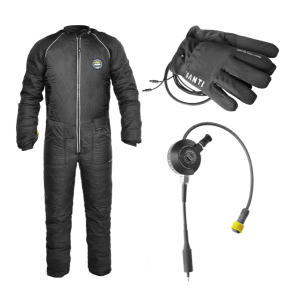
People often ask how long it takes me to prepare for a project. In some ways, I have made a lifetime of preparations for each endeavor that I embark upon. This time I am headed back to the northern reaches of my home country to shoot a story about climate change for a documentary film called “Under Thin Ice.” It will air on the esteemed program “Nature of Things,” in Canada and on media outlets around the world. It is an ambitious project that has been in pre-production for more than two years.
This week I am handling the last minute prep work. My colleague Mario Cyr received our cameras and underwater housings today and is testing them in his local pool in Montreal. I am on my way home from Edmonton to complete my packing. Every ounce of gear is expensive to ship so we all need to minimize kit. There will be no way to get anything once we are on site on the sea ice so careful thought and maintenance is given to each item in advance. I will tune up regulators, check cameras, charge batteries and pack spare parts.
This week I will travel to Montreal for production meetings and a last-minute medical check. Asa presenter in addition to being an underwater cinematographer, the production company will need to get an insurance policy on me as “talent.” In fact, there is a lot of different insurance for a project of this magnitude. Production insurance, equipment insurance, medical insurance, diving medical insurance, professional liability, errors and omissions and evacuation insurance name a few of the policies that production companies secure for a project. Evacuation insurance is one of the most interesting types of coverage. We are camping on the transitional sea ice that sometimes breaks up early and floats off into the ocean. Evacuation insurance would cover efforts to rescue us from a floating ice floe or offer medical transport from a remote camp if somebody was injured. It might seem unlikely, but I know a couple of people who have had to activate their rescue policies.
